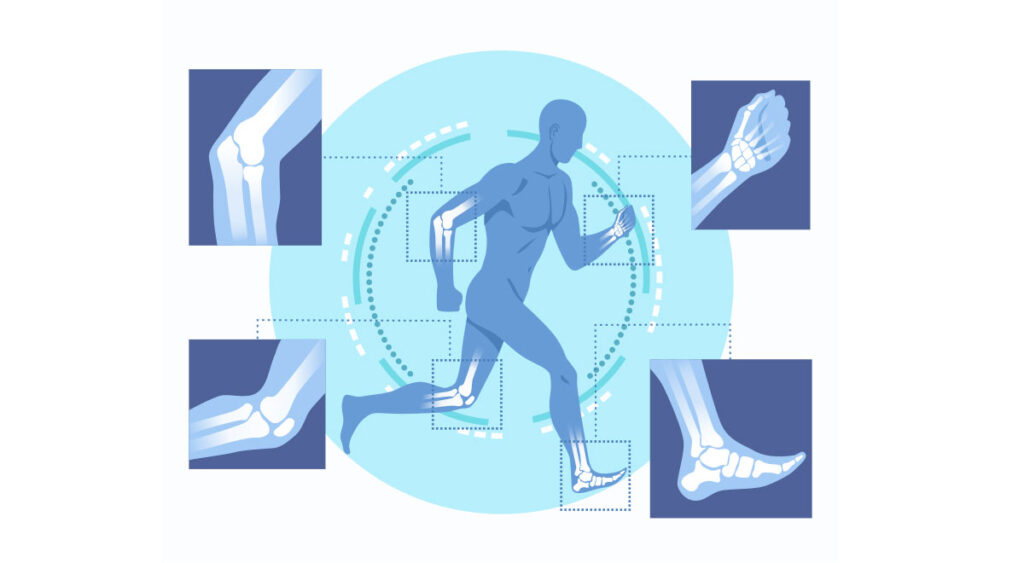Joint pain can significantly impact our quality of life, turning even simple everyday tasks into tough challenges. It might stem from overuse, stress, injury, or disease, but regardless of the root cause, finding the correct pain management options is crucial to restoring mobility and overall well-being.
We will explore various techniques and approaches for pain relief. By understanding the options and adopting a holistic approach, you will be able to manage joint pain and regain control of your life.
Understanding the causes of joint pain
Joint pain can be acute and chronic. The source of it can range from mild overuse to incurable diseases that affect the whole body. Arthritis, inflammatory diseases, autoimmune conditions, injuries, old age, wear and tear of the tissues; there are so many things that can cause joint pain.
So, to effectively manage joint pain, it’s crucial to understand the cause. It will not only help you find the correct pain management options, but by identifying the source, you might be able to discover any dangerous underlying issues that might need additional attention.
If you want to learn more about diseases that might affect your joints, make sure you read our joint pain guide as well. And don’t forget that it’s always best to consult a doctor if you experience severe or long-standing joint pain.
Joint pain medications
One of the most reliable ways to manage joint pain is through drugs. These pills and injections can effectively treat even severe pains. There are three types of medication:
Over-the-counter pain medications for joint pain

Over-the-counter (OTC) medications are those you can purchase in your supermarket or a grocery shop. There are generally two options when it comes to OTC pain relief medications:
- Acetaminophen, or paracetamol, is a drug that can reduce mild pains and fever. Tylenol and Panadol are the most common acetaminophen.
- Most NSAIDs are oral medications, but they also come in topical solutions like creams, gels, and pain patches, which might prove effective when dealing with joint pain.
Prescription pain medications for joint pain
In cases of severe pain, doctors might prescribe painkillers with more potent ingredients.
Higher prescription-strength NSAIDs and steroids are prescribed for severe or chronic joint pain. They help reduce inflammation, provide pain relief, and improve joint function.
Opioids which have potent analgesic effects, such as codeine or oxycodone, are also prescribed for severe joint pains when other medications have been ineffective. These medications tend to have a higher risk of serious side effects, and their continuous use can lead to addiction.
Disease-modifying antirheumatic drugs

Disease-modifying antirheumatic drugs (DMARDs) are sometimes used to treat inflammatory joint conditions like rheumatoid arthritis (RA) and psoriatic arthritis.
These drugs relieve pain by altering the disease’s progression and reducing symptoms. They work by suppressing the immune system and reducing the autoimmune reaction of these joint diseases, which comes with the downside of a weakened immune function.
Non-medicine-based joint pain relief options
In addition to drugs, doctors sometimes recommend alternative pain management methods or treatments that provide relief for joint pains. These techniques can often be used alongside traditional medications and provide additional pain relief.
Pain relief therapies
Different therapies exist that target painful areas and relieve the pain through specific activities:
- Physical therapies focus on targeted exercises, stretches, and techniques to improve joint function, enhance mobility, and reduce pain. By using personalized rehabilitation strategies, physical therapy can promote long-term joint health.
- Temperature therapies involve the application of heat or cold to the affected joint. While heat therapy through warm compressions or heating pads can help relax muscles, increase blood flow, and alleviate stiffness, Cold therapy through ice packs can reduce inflammation, numb the area, and provide temporary pain relief for inflamed joints.
- Massage therapy can provide pain relief through the manipulation of soft tissues. It reduces muscle tension, enhances flexibility, and improves circulation.

It is important to note that while such therapies undoubtedly help in relieving pain, they have to be done or recommended by professionals.
Assistive devices
Most joint issues make movement difficult and painful. Assistive devices such as canes, braces, and orthotics can provide external support to joints, redistributing weight and reducing stress on painful areas. These devices can reduce strain on the joints and allow individuals with joint pain to engage in daily activities with greater comfort.
Meditation
Meditation is a proven way to increase your overall well-being and relieve pain at the same time. It triggers the release of endorphins, a hormone that acts as a natural painkiller. Furthermore, it reduces stress, improves emotional health, and increases focus.
Lifestyle changes
Minor lifestyle changes can also help reduce stress on the joints and promote overall joint health. Below are a few changes you can incorporate in your daily life which can prevent long-term pain problems:
- Rest your painful joints at the end of the day.
- Maintain a proper posture to distribute weight when lifting heavy objects.
- Follow a healthy and balanced diet to provide the essential nutrients for the tissues.
- Regularly exercising and maintaining a healthy weight to reduce the load on the painful joints especially, your knees and foot.
Regular check-ups and screenings with your healthcare provider
Natural remedies for joint pain relief
Several natural ingredients can also be used to treat pain and provide relief. However, not all natural remedies are scientifically proven and sometimes have only anecdotal evidence supporting their use. Make sure that you always check the official medical opinion or consult with your doctor before trying something new.
Herbal remedies for joint pain
People who’d like to avoid the side effects of traditional drugs might turn to herbal remedies in supplement forms or herbal pain patches to alleviate mild joint pains and symptoms.
Turmeric is known for its anti-inflammatory properties and proved to be effective in treating osteoarthritis patients. Chamomile and boswellia have also shown good results in treating joint pains.
Omega-3 fatty acids
Research on Omega-3 fatty acids has shown that they may support the cardiovascular system, boost immunity, and support brain health with some evidence suggesting that they may protect against cartilage loss and reduce joint inflammation.
These essential fatty acids naturally occur in fatty fish, flaxseeds, and chia seeds, but they are also available as dietary supplements, containing a higher dosage.
Topical essential oils
Research suggests that topically used essential oils, such as peppermint, eucalyptus, and lavender, may reduce joint pain and stiffness. These oils possess analgesic and anti-inflammatory properties that can provide a soothing effect.
Innovations in drug-free joint pain relief options
While traditional painkillers are usually reliable and some of them can alleviate even severe pains, their side effects can’t be ignored, especially in the long run. Alternative or natural pain relief options come with less serious side effects, but often they are not as potent and/or consistent as traditional drugs.
New technologies and solutions arise from time to time. These solutions often come in the form of pain patches due to their ease of application and contour-binding properties that allow the users to apply them anywhere on their body. Besides the few types of patches mentioned earlier, some patches use weak electrical currents to relieve pain, and there is the Freedom Patch that is apart and ahead of others. Freedom Patch from Super Patch is a pain relief patch backed by strong scientific research and the principle of providing a drug-free solution. The Freedom Patch uses vibrotactile technology which communicates directly with the nerve pathways to disrupt pain signals and alleviate pain. Our Freedom Patch along with other patches is FDA-registered, non-invasive and 100% drug-free making it an effective solution for pain relief without any side effects.
